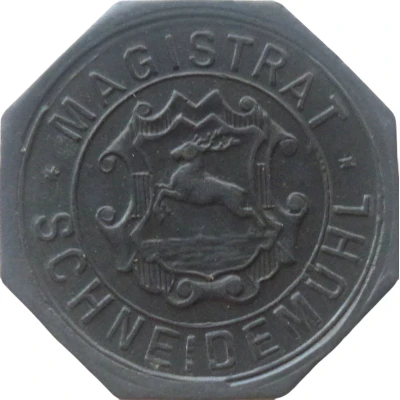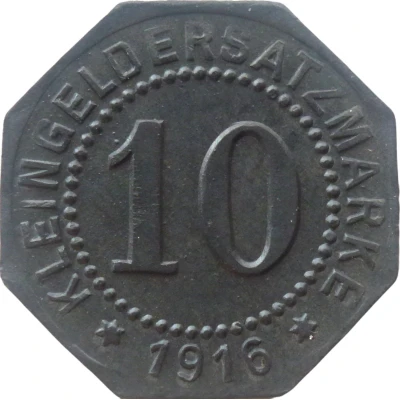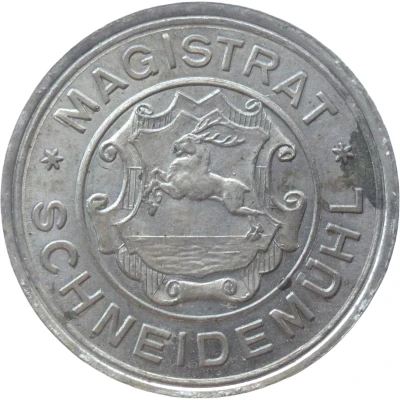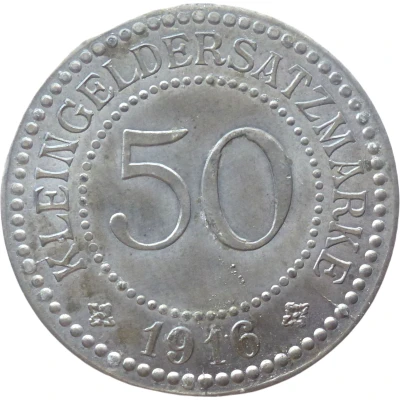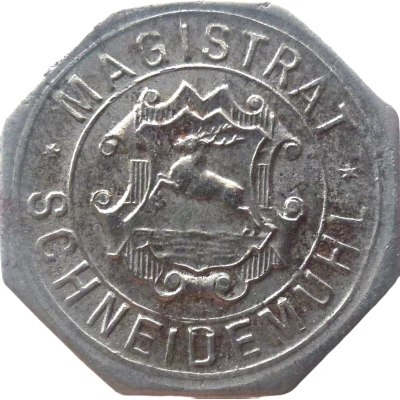
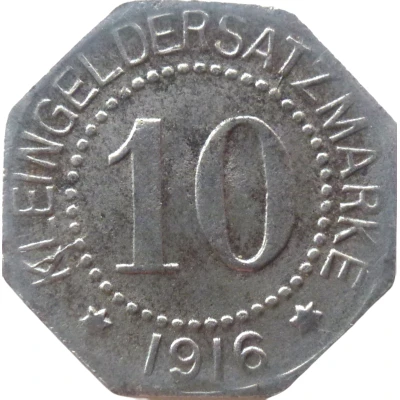

© Willem63 (CC BY-NC-SA)
10 Pfennigs - Schneidemühl
1916 year| Iron | 2.4 g | 20.8 mm |
| Issuer | City of Schneidemühl (Posen) (Prussian province of Posen) |
|---|---|
| Emperor | William II (Wilhelm II) (1888-1918) |
| Type | Standard circulation coin |
| Year | 1916 |
| Value | 10 Pfennigs (10 Pfennige) (0.10) |
| Currency | Mark (1914-1924) |
| Composition | Iron |
| Weight | 2.4 g |
| Diameter | 20.8 mm |
| Thickness | 1.2 mm |
| Shape | Octagonal (8-sided) |
| Technique | Milled |
| Orientation | Medal alignment ↑↑ |
| Demonetized | Yes |
| Updated | 2024-10-04 |
| Numista | N#153167 |
|---|---|
| Rarity index | 79% |
Reverse
Solid line rim, legend surrounding pearl circle with denomination centered
Script: Latin
Lettering:
KLEINGELDERSATZMARKE
10
✶ 1916 ✶
Edge
Plain
Comment
Issuing body: [Stadt, Posen].Interesting fact
The 10 Pfennigs - Schneidemühl 1916 coin from the City of Schneidemühl (Posen) in the Prussian province of Posen is interesting because it was made of iron, which was a unusual material for coins at that time. Most coins were made of copper, silver, or gold, but the use of iron was a sign of the economic and political changes happening in Germany during World War I. The coin's design, featuring a crowned eagle and the value "10 Pfennigs" on one side and the coat of arms of Schneidemühl on the other, is also notable for its simplicity and utilitarian style, reflecting the practical needs of a coin meant for everyday use.
